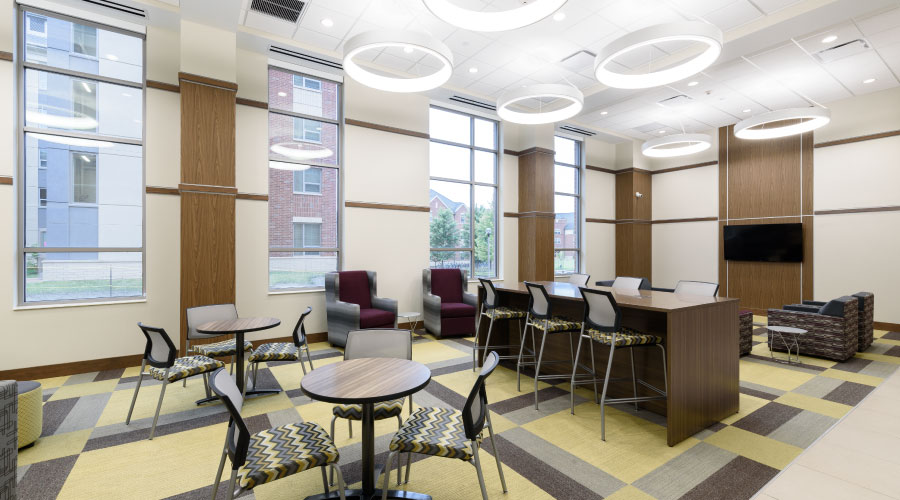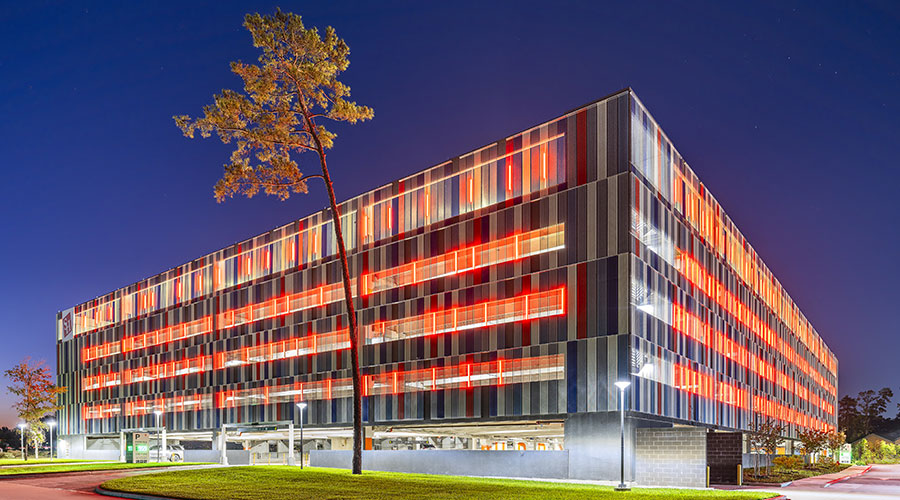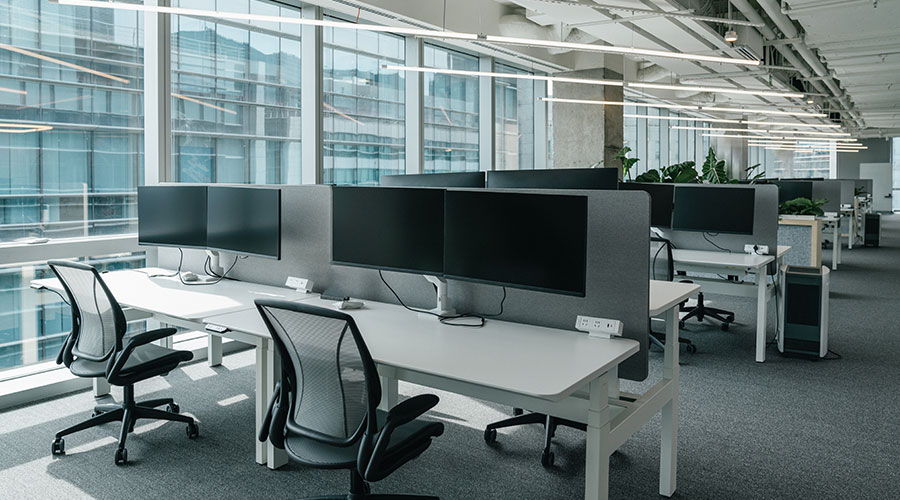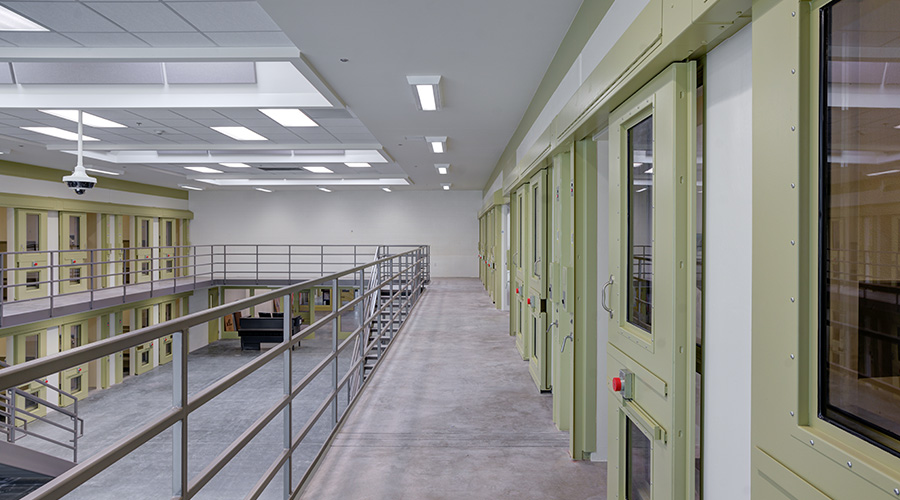LEED Lighting at the University of Missouri
Sustainable features include LEDs, lighting controls, and use of natural light
Colleges and universities today are looking for sustainable facilities, and a number of them choose to participate in the U.S. Green Building Council’s LEED process to obtain a measurable level of sustainability.
KWK Architects, along with associate architect Lawrence Group, recently designed residence halls at the University of Missouri that achieved the highest level of sustainability certification, LEED Platinum. While the client requirement for the new 198,000 square-foot, 570-bed residence hall project was LEED Certified minimum, the KWK project team was dedicated to achieving the highest rating within the tight budget, and the team looked to maximize energy efficiency in the buildings to achieve this goal.
Aspects of LEED focus on energy-saving features of buildings, including their lighting systems. At the Brooks and Bluford Halls at the University of Missouri, sustainable lighting included high-efficiency LED lighting, daylighting controls, and occupancy setback control of lighting.
Natural and artificial light
Study lounges at Bluford hall feature circular LED pendant and recessed lighting coupled with large windows for natural light to illuminate the space.
Lighting controls
Student rooms at Bluford and Brooks halls feature occupancy setback controls to automatically turn off lighting when the room is unoccupied.
Ceiling callout
The Legacy Grill at the Restaurants at Southwest dining facility connected to Brooks and Bluford halls features a variety of hanging LED bar and pendant lighting to add interest to the space's exposed ceiling.
Subtle uplighting
Pendant lighting adds style over the reception desk at Brooks Hall, while subtle uplighting illuminates overhead ceiling wood accents in the lounge area.
Related Topics:












